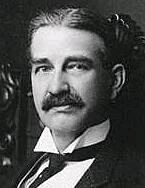Trajectory Introduction
A Note on eBook Publishing and the Trajectory Classics
Tablet publishing is not new. In fact, it was quite popular several thousand years ago when clay tablets were used as the original transportable media. Papyrus proved to be even easier to manage and to record the events of the day upon, but when that became harder to come by after the fall of the Roman Empire, Western writers turned to parchment and vellum. Calligraphers, copyists, correctors, illuminators, and rubricators (the lucky monks who were selected to paint the red letters) went about their long and laborious tasks to create a single book. Considering the effort that went into this, it is not surprising that books were often chained to tables in the original public libraries. From the Han Dynasty's creation of the woodblock printing method in the 3rd century, to Guttenberg's invention of moveable type in Europe around 1450, modern advances made it progressively easier to produce books and to make reading accessible to a larger number of people.
It is interesting to consider how readers must have reacted during the transition from beautifully hand-printed and custom illustrated books to the volumes that were mass-produced by a printing machine. The tactile experience of holding an original work of art must have been hard to part with, but few people had the chance to actually read these books, much less own them. It has been estimated that more books were published in the 50 years following Guttenberg's invention than in the prior history of mankind. Today, it is easy to imagine a future where personal digital libraries will rival yesterday's traditional public libraries.
Our goal here at Trajectory is to enable a new generation of readers to access and interact with the great works of mankind through the latest evolution in tablet publishing. We are deeply interested in allowing people to view these works through a new perspective, which includes the unique illustrations and the statistics generated through our semantic lens. Everyone who is inspired by evolving forms of art now has the opportunity to experience the Classics in a fresh way, and our hope is that our small contribution may enable readers to see these classic works in a new light.
Jim Bryant
Trajectory, Inc.
Marblehead, MA
May 2014
About the Author
Lyman Frank Baum, known as L. Frank Baum, was an American author of children's books, best known for writing The Wonderful Wizard of Oz. He wrote thirteen novel sequels, nine other fantasy novels, and a host of other works, and made numerous attempts to bring his works to the stage and screen. His works anticipated such century-later commonplaces as television, augmented reality, laptop computers, wireless telephones, women in high risk, action-heavy occupations, and the ubiquity of advertising on clothing.
About the Book
Aunt Jane's Nieces Out West is the penultimate novel in the Aunt Jane's Nieces series, written by L. Frank Baum as "Edith Van Dyne" and published in 1914.
In the novel, Beth de Graf and Patsy Doyle, staying in Hollywood, California after parting from their cousin's California ranch in the previous novel, stumble onto the set of a film depicting a collapsing building. Beth is horrified that they have become unwitting extras in a motion picture, for the films she has seen she found atrocious and contrived. Uncle John Merrick offers to let them meet a filmmaker before they form a lasting opinion on the medium, and this filmmaker turns out to be Otis Werner, the same director who shot the film. He argues that the building was falling apart and that the film uses a story to convey the dangers of the use of crumbling factories, for in the film, the factory owner's daughter is killed by a collapsing wall, and he is forced to rethink his life because he has done it all to provide for her.
Beth is convinced that films can have edifying messages, and along with Patsy and their cousins, Arthur Weldon and Louise Merrick Weldon, look into starting a venture of their own to produce films intended specifically for children. Uncle John is proud to support this measure.
